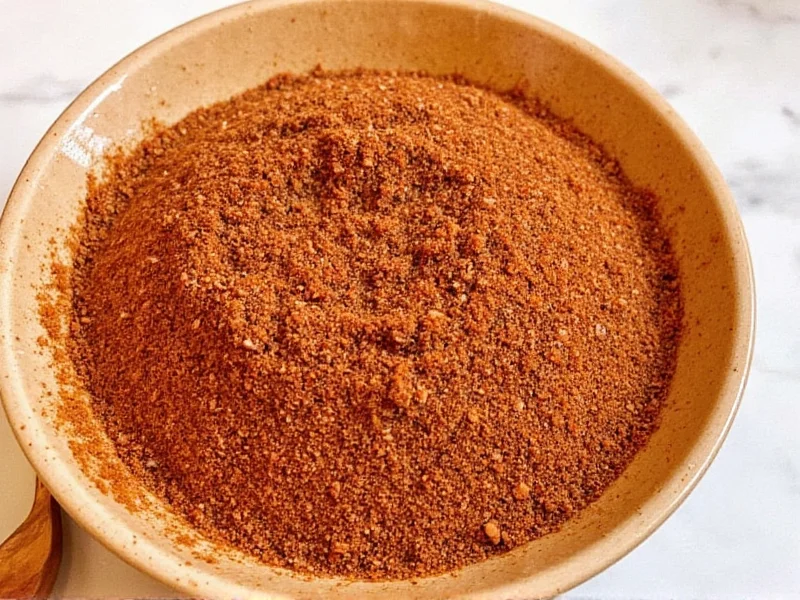Creating the perfect dry rub for chicken transforms ordinary poultry into extraordinary meals with minimal effort. Unlike marinades that require hours of soaking, dry rubs work quickly while preserving chicken's texture. The magic happens through osmosis and the Maillard reaction—salt draws out moisture temporarily, then pulls flavorful compounds back into the meat as it cooks, while sugars caramelize to form that irresistible crust.
The Science Behind Effective Chicken Dry Rubs
Dry rubs succeed where many home cooks fail by addressing chicken's two main challenges: blandness and dryness. The right combination of ingredients creates a protective layer that locks in juices while building complex flavors. Salt remains the most crucial component—not just for seasoning, but for altering protein structures to retain moisture. Sugar content should stay below 15% of the total rub weight to prevent burning during cooking, especially with high-heat methods like grilling.
Essential Components of a Balanced Dry Rub
Professional chefs follow a reliable ratio framework that ensures consistent results. This formula works for any quantity while maintaining proper balance:
| Component | Function | Ratio | Common Ingredients |
|---|---|---|---|
| Salt | Moisture retention, flavor enhancement | 30% | Kosher salt, sea salt |
| Sugar | Caramelization, balance | 15% | Brown sugar, coconut sugar |
| Primary spice | Flavor foundation | 25% | Smoked paprika, chili powder |
| Secondary spices | Complexity, depth | 20% | Garlic powder, onion powder |
| Herbs | Freshness, aroma | 10% | Thyme, oregano, rosemary |
Step-by-Step Dry Rub Application Process
Proper technique matters as much as the recipe itself. Follow these steps for restaurant-quality results:
- Pat chicken completely dry with paper towels—moisture prevents rub adhesion
- Apply thin oil layer (1/2 tsp per pound) to help rub stick without adding moisture
- Season generously using 1 tablespoon of rub per pound of chicken
- Gently massage rub into surface using fingertips, focusing on crevices
- Rest uncovered in refrigerator for 30-60 minutes before cooking
This resting period allows salt to penetrate while flavors meld. For whole chickens, loosen skin and apply some rub directly on the meat for deeper flavor penetration. Bone-in pieces require slightly more rub than boneless cuts due to increased surface area.
Cooking Methods and Timing Adjustments
Different cooking techniques require specific adjustments to your dry rub approach:
- Grilling: Reduce sugar content by 25% to prevent burning. Cook over indirect heat after initial sear.
- Baking: Increase salt by 10% since oven cooking doesn't create as intense crust formation.
- Air frying: Use fine-ground spices to prevent burning in the high-heat circulating environment.
- Smoking: Omit sugar completely—wood smoke provides natural sweetness during long cooks.
Troubleshooting Common Dry Rub Problems
Even experienced cooks encounter these issues. Here's how to fix them:
Rub falling off during cooking: You likely didn't properly dry the chicken surface. Always pat thoroughly with paper towels before applying a light oil coating. For grilling, ensure cooking surface reaches proper temperature (375-400°F) before adding chicken to create instant sear.
Bitter or burnt flavors: Spices like paprika burn at 350°F. Either reduce cooking temperature or apply rub after initial sear. For sugar-based rubs, create a two-zone fire when grilling to move chicken away from direct flames after crust forms.
Uneven flavor distribution: This happens when rub isn't properly massaged into the meat. Use circular motions with your fingertips to work the seasoning into every surface. For whole chickens, separate skin from meat and apply some rub directly on the flesh.
Flavor Variations for Different Palates
Customize your dry rub based on dietary needs and flavor preferences:
Mediterranean Style: Replace paprika with 2 tablespoons dried oregano, add 1 teaspoon lemon zest, and substitute thyme with rosemary. Perfect for baked chicken thighs with olive oil and lemon slices.
Keto-Friendly Version: Eliminate sugar completely and increase smoked paprika to 3 tablespoons. Add 1/2 teaspoon celery seed for natural sweetness without carbs. Ideal for air fryer chicken breast recipes.
Caribbean Jerk-Inspired: Include 1 teaspoon allspice, 1/2 teaspoon cinnamon, and 1/4 teaspoon cayenne. Use coconut aminos instead of oil for application. Works beautifully with chicken drumsticks on the grill.
Storage and Batch Preparation Tips
Dry rubs maintain peak flavor for 4-6 weeks when stored properly. Use these professional techniques:
- Store in airtight glass container away from light and heat
- Add citrus zest just before use—it loses potency quickly
- For large batches, divide into weekly portions to maintain freshness
- Label containers with date and spice ratios for consistency
Freeze whole spices before grinding for maximum flavor retention. Pre-mix salt-free versions, then add salt separately just before use—this prevents the salt from drawing moisture from other ingredients during storage.











 浙公网安备
33010002000092号
浙公网安备
33010002000092号 浙B2-20120091-4
浙B2-20120091-4